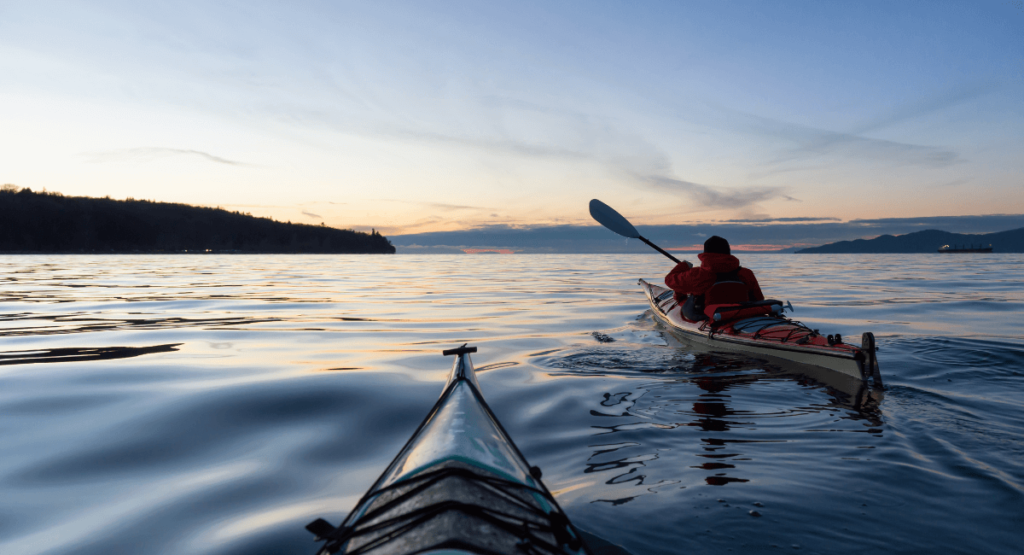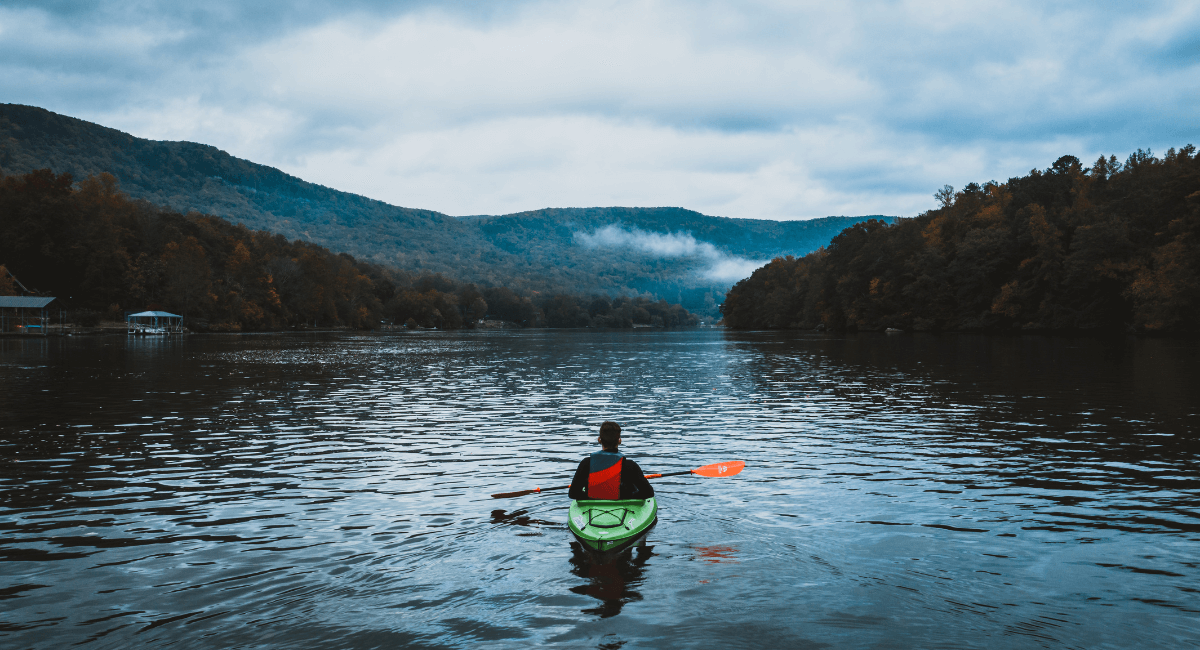Kayaks should not be left outside in winter to prevent damage from freezing temperatures. Exposure can lead to cracking.
Leaving kayaks outside during the winter months can result in damage due to the freezing temperatures. The cold weather can cause the materials to become brittle and susceptible to cracking, compromising the structural integrity of the kayak. To ensure the longevity of your kayak, it is best to store it indoors or in a sheltered area during winter.
Proper storage will help protect your kayak from the harsh winter elements and extend its lifespan, allowing you to continue enjoying your outdoor adventures for years to come. By taking these precautions, you can avoid costly repairs or replacements in the future.
The Impact Of Winter On Kayaks
As winter approaches, many kayakers wonder about the best way to protect their kayaks from harsh weather conditions. The impact of winter on kayaks can be significant, with cold temperatures, snow, and ice posing potential risks. In this post, we will explore the effects of winter on kayaks and discuss whether kayaks can be left outside during the winter months.
Effects Of Cold Temperatures
Cold temperatures can have a detrimental impact on kayaks. When exposed to freezing temperatures, the plastic or composite material of kayaks may become brittle and prone to cracking. It is crucial to protect kayaks from extreme cold to prevent damage to their structural integrity.
Snow And Ice Accumulation
Snow and ice accumulation can also pose risks to kayaks left outside during winter. The added weight of snow and ice can exert pressure on the kayak, potentially causing deformation or damage. Additionally, melting snow and ice can seep into the kayak’s cockpit and hatches, leading to moisture-related issues such as mold and mildew.
Best Practices For Storing Kayaks In Winter

Discover the key practices for winter kayak storage to protect your gear. Safely store kayaks indoors or under covers to shield them from harsh winter conditions. Proper storage ensures durability and extends the lifespan of your kayaks.
Best Practices for Storing Kayaks in Winter Winter can be harsh on kayaks. Proper storage is key to keeping your kayak in top condition. Here are some best practices for storing kayaks in winter. Indoor Storage Options Indoor storage is ideal to protect your kayak from the elements. Consider storing in a garage, basement, or dedicated kayak storage area. Make sure the storage space is clean and dry. Outdoor Storage Considerations If indoor storage is not an option, choose a quality kayak cover to protect it from snow and ice. Elevate the kayak off the ground to prevent damage. Secure it to prevent any potential damage from wind or wildlife. Key Outdoor Storage Tips – Cover the kayak with a waterproof tarp – Secure the kayak with straps or locks – Check regularly for damage or wear – Remove any snow or ice buildup promptly In conclusion, following these tips will help preserve your kayak’s integrity during the winter months.
Potential Damage To Kayaks Left Outside In Winter

Leaving kayaks outside in winter can result in various damages which may affect their performance and lifespan.
Cracking And Warping
Kayaks left outside in winter can suffer cracking due to the expansion and contraction of the plastic material.
Warping is another common issue caused by extreme temperature changes which can alter the kayak’s shape.
Damage From Freezing
Freezing temperatures can lead to structural damage on kayaks stored outside during winter.
Ice formation inside the kayak may result in weakening of the material.
Tips For Protecting Kayaks During Winter Months

Winter can be a challenging time for kayak owners. The cold, harsh weather can potentially cause damage to your kayak if it’s left unprotected. To keep your kayak in top condition during the winter months, it’s essential to take the necessary precautions. Here are some valuable tips for protecting your kayaks during the winter months.
Using Kayak Covers
One of the most effective ways to protect your kayak during the winter months is by using a high-quality kayak cover. Kayak covers are designed to shield your kayak from elements like snow, rain, and wind. They also help prevent the accumulation of dirt and debris, keeping your kayak clean and well-maintained. When selecting a kayak cover, ensure it is durable, waterproof, and specifically designed for the size and shape of your kayak.
Regular Inspections
Regular inspections of your kayak during the winter months are crucial for identifying and addressing any potential issues promptly. Inspect your kayak for any signs of damage, such as cracks or scratches, caused by the cold temperature or other environmental factors. Additionally, check the kayak cover for any tears or weak spots that may compromise its protective function. By staying vigilant and addressing any problems immediately, you can ensure your kayak remains in optimal condition throughout the winter.
Importance Of Proper Maintenance

Proper maintenance is crucial to ensure the longevity and performance of your kayak, especially during the winter months. By taking the time to clean, dry, and check for leaks, you can prevent damage caused by freezing temperatures, ice expansion, and corrosion. In this article, we will discuss the importance of each maintenance step and provide tips on how to properly care for your kayak during the winter season.
Cleaning And Drying
Cleaning and drying your kayak is an essential step in winter maintenance. Rinse off any dirt, debris, or saltwater residue from your kayak’s hull using fresh water. Pay special attention to the areas around hatches, cockpit rims, and rudders to remove any salt build-up that could lead to corrosion. Once cleaned, dry your kayak thoroughly, both inside and out, to prevent the growth of mold or mildew.
To thoroughly dry your kayak, wipe down all surfaces with a clean, absorbent cloth or sponge. Pay attention to areas where water may accumulate, such as seat wells, storage compartments, and scupper holes. Leave your kayak in a well-ventilated area to ensure complete drying before storing it for the winter.
Checking For Leaks
Inspecting your kayak for leaks is vital, as even a small leak can cause significant damage when water freezes and expands. Begin by inspecting the hull and deck for any visible cracks, scratches, or punctures. Run your hands along these areas to feel for any irregularities that could indicate potential leaks.
Additionally, perform a thorough water test by filling your kayak with a few inches of water and monitoring it closely for any signs of leakage. Pay particular attention to the areas around hatches, bulkheads, and seams. If you discover any leaks, it’s crucial to repair them promptly using an appropriate kayak repair kit or seek professional assistance.
By following these steps and incorporating proper maintenance into your winter routine, you can protect your kayak from damage and ensure it’s ready for the next paddling season. Remember, a little care goes a long way in preserving the performance and lifespan of your beloved kayak.
Alternatives To Outdoor Storage
While outdoor storage for your kayak may not be an ideal option during the winter months, there are several alternatives that can help protect your kayak from the elements. Whether you’re dealing with limited space or lack of access to a garage or basement, these alternatives can provide a safe and secure solution for winter storage.
Renting Storage Space
If you live in an apartment or a small home without sufficient storage space, renting storage space can be an excellent option. Many facilities offer storage units specifically designed to accommodate kayaks and other large outdoor equipment. These units are typically climate-controlled, ensuring your kayak stays protected from extreme temperatures and moisture.
Community Storage Options
If you’re part of a boating or kayak community, consider reaching out to fellow enthusiasts and exploring community storage options. These options can include shared storage facilities, where you divide the rental costs with other members or even storage sheds provided by the community. Not only does this help reduce costs, but it also allows you to socialize with like-minded individuals who share your passion for kayaking.
Rehabilitation Of Kayaks Damaged By Winter Exposure
When kayaks are left outside during the winter months, they are susceptible to damage from the harsh weather conditions. The rehabilitation of kayaks damaged by winter exposure is a crucial process to ensure their longevity and performance. In this post, we will discuss the steps to repair cracks and restore warped kayaks, enabling you to salvage your beloved watercraft and get it back on the waves where it belongs.
Repairing Cracks
Cracks on kayaks can be a common result of winter exposure. Repairing cracks promptly is essential to prevent further damage and maintain the structural integrity of the kayak. Begin by cleaning the affected area and applying a waterproof epoxy resin to seal the crack. Once the resin has cured, sand the area to ensure a smooth finish, and apply a fresh coat of marine-grade paint to protect the repaired section and blend it with the rest of the kayak.
Restoring Warped Kayaks
Restoring warped kayaks is a delicate process that requires patience and precision. Begin by gently heating the warped area using a heat gun or hot water, gradually coaxing the kayak back into its original shape. It’s important to avoid using excessive force, as this could cause further damage. Once the kayak has been successfully restored to its original shape, allow it to cool and set before inspecting for any residual damage that may require additional repairs.
Final Thoughts On Winter Kayak Storage
During winter, it’s best to store your kayak indoors to protect it from the harsh weather. If indoor storage isn’t possible, use a kayak cover and secure it properly. Regularly check for any damage caused by freezing temperatures to ensure your kayak remains in top condition.
Balancing Convenience And Protection
Finding the right balance between convenience and protection is crucial when deciding how to store your kayak in the winter.
Long-term Impact On Kayak Lifespan
Consider the long-term effects of exposing your kayak to harsh winter conditions on its overall lifespan.
Frequently Asked Questions Of Can Kayaks Be Left Outside In Winter
Can Kayaks Be Left Outside In Winter?
Kayaks can be left outside in winter, but it’s important to take precautions. Store them upside down and cover them with a tarp to protect against snow and ice. Avoid leaving them on the ground where they can freeze or get damaged by moisture.
Regular maintenance is also necessary to prolong their lifespan.
How Should I Clean My Kayak After Winter Storage?
Cleaning your kayak after winter storage is essential. Use a mild soap and water solution to remove any dirt or grime. Scrub using a soft brush or sponge and rinse thoroughly. Pay special attention to the undercarriage and cockpit. Once clean, allow it to air dry before storing it properly for the next winter season.
What Is The Best Way To Store A Kayak During Winter?
The best way to store a kayak during winter is indoors in a dry and temperature-controlled environment. If that’s not possible, store it in a garage or shed. Keep it off the ground by using a rack or suspending it from the ceiling.
Cover it with a tarp to protect against dust and moisture.
Can A Kayak Stay Outside During Freezing Temperatures?
While kayaks can withstand freezing temperatures, it’s not recommended to leave them outside in extreme cold. Freezing temperatures can cause damage to the kayak’s structure and materials. If you must store your kayak outside during winter, take proper precautions such as wrapping it with insulating materials or bringing it indoors during the coldest days.
Conclusion
Leaving your kayak outside in winter requires careful consideration and proper storage methods. By protecting your kayak from harsh weather conditions, such as freezing temperatures and snow, you can prolong its lifespan and maintain its integrity. Implementing these protective measures will ensure that your kayak remains in good condition and ready for use when the warmer weather returns.
